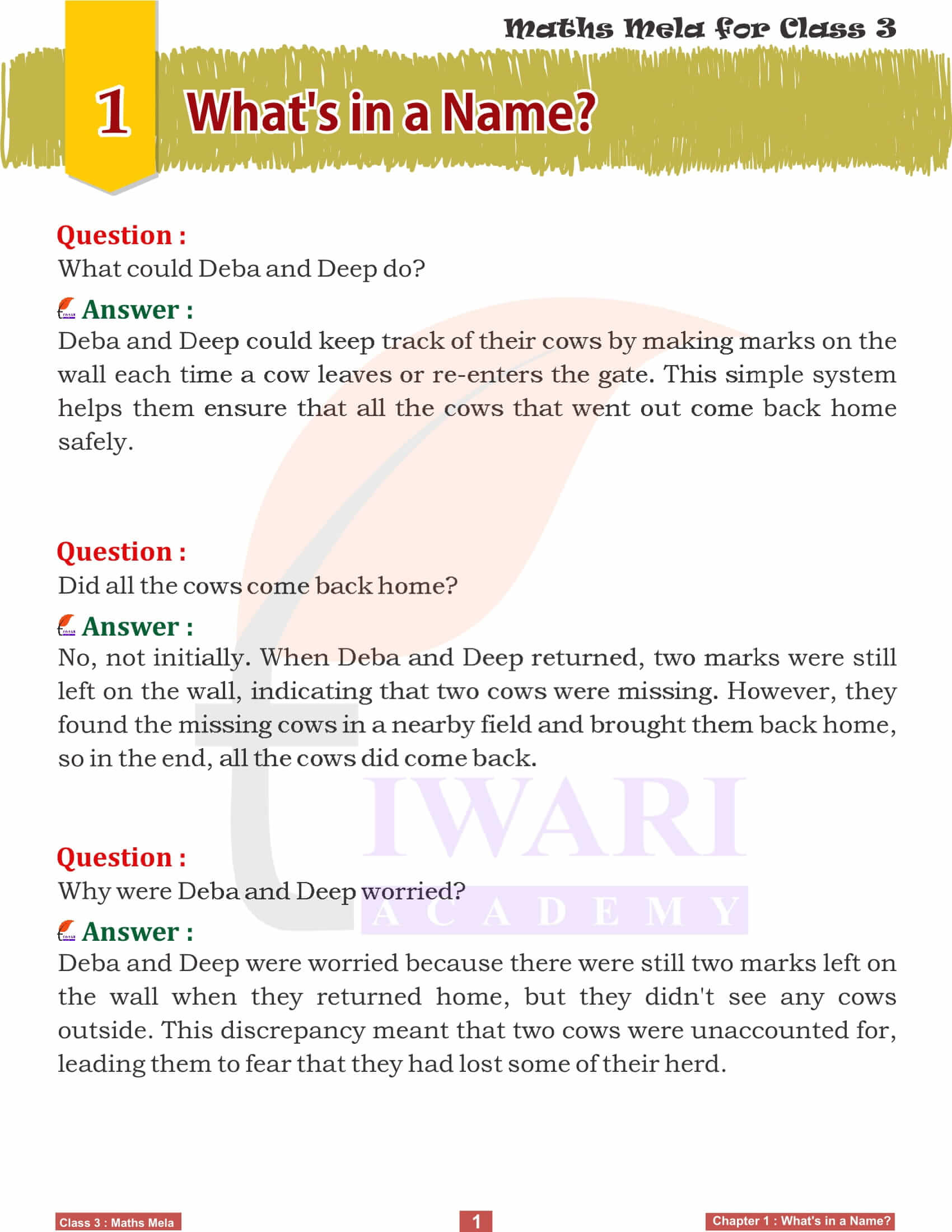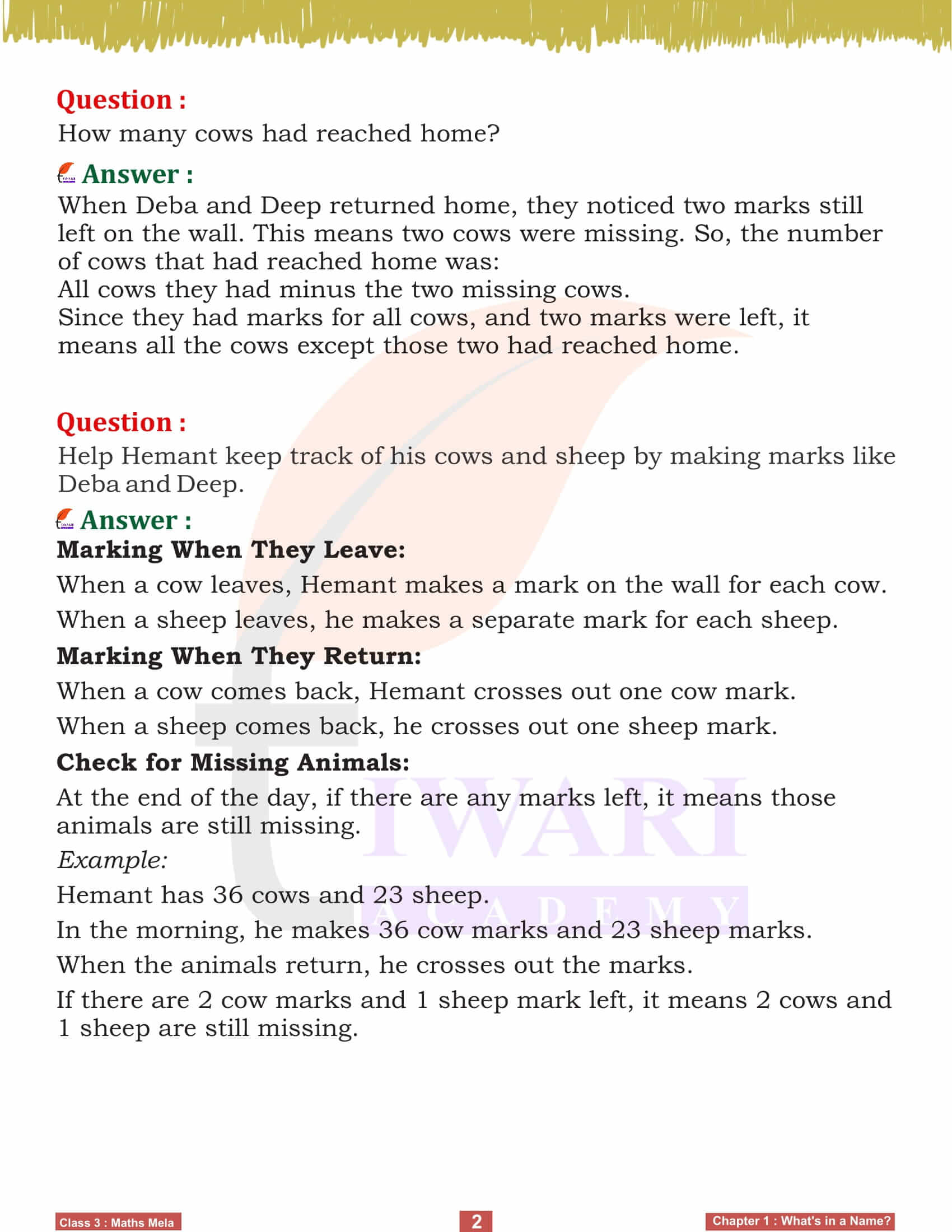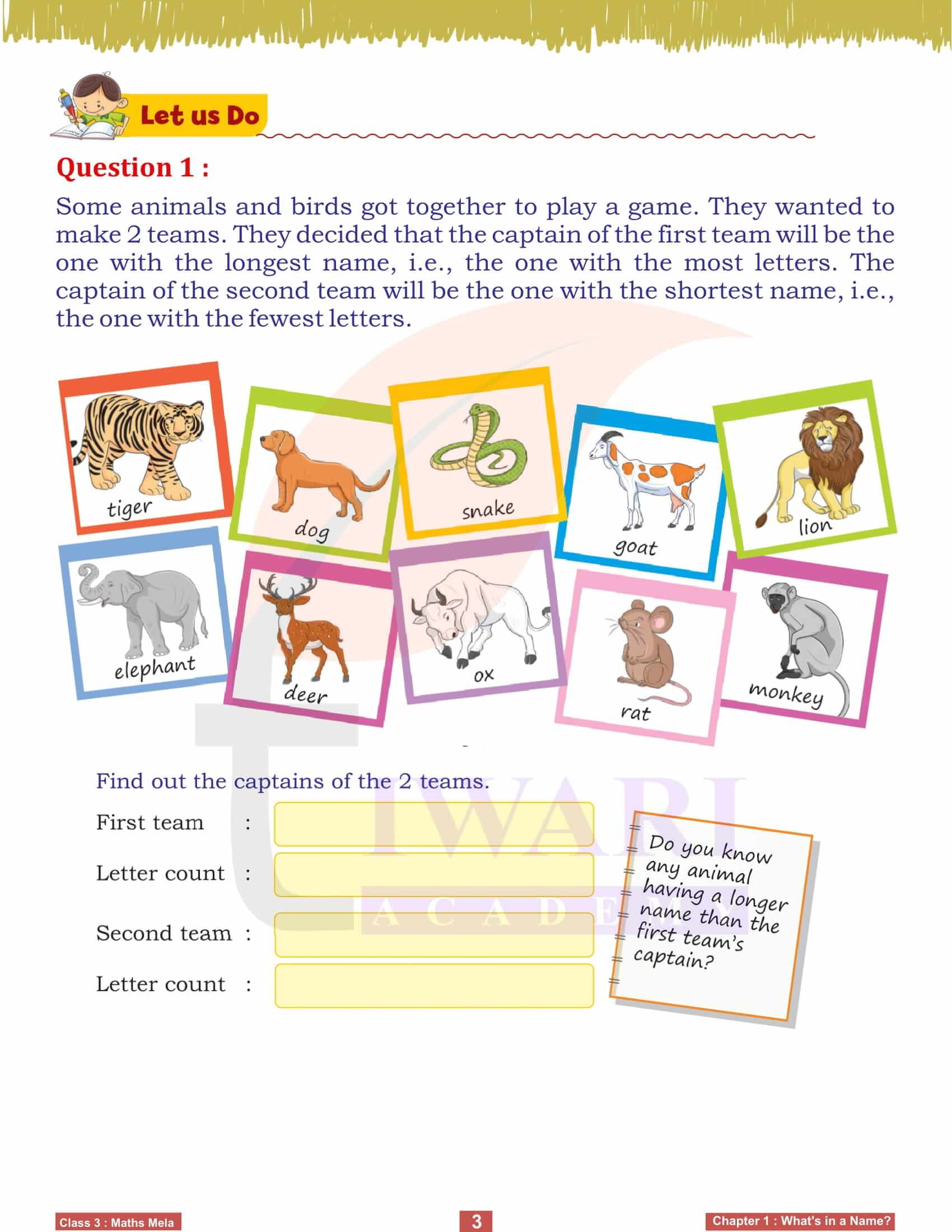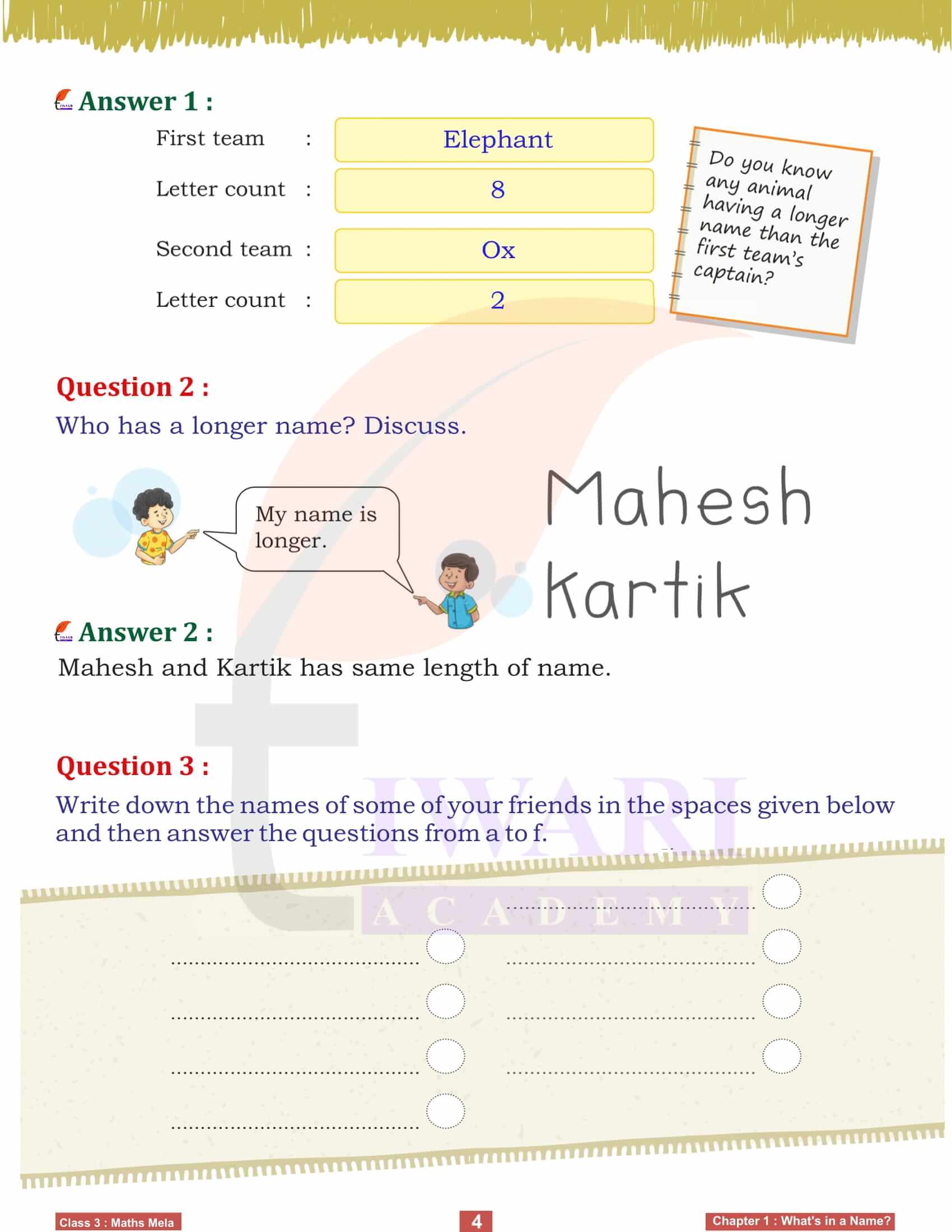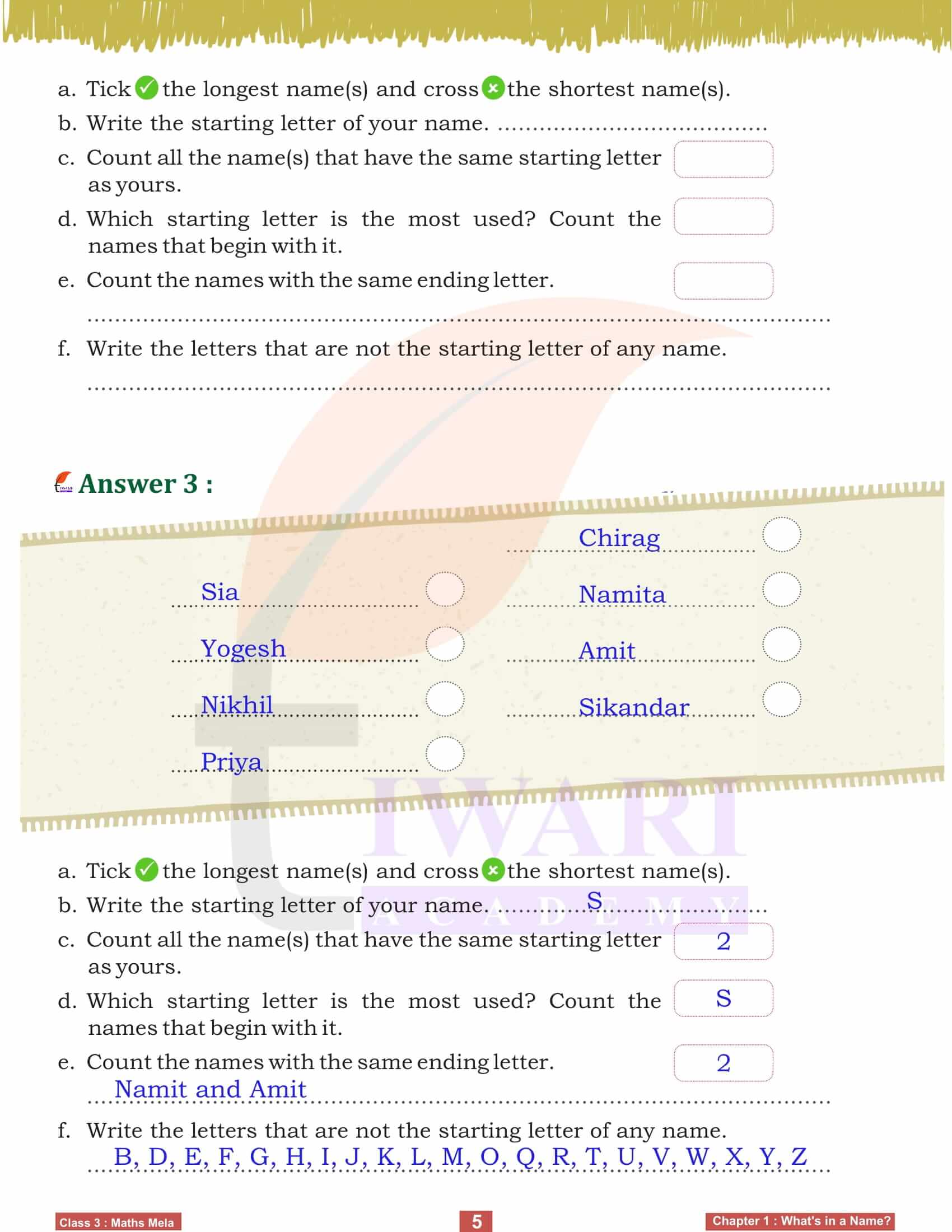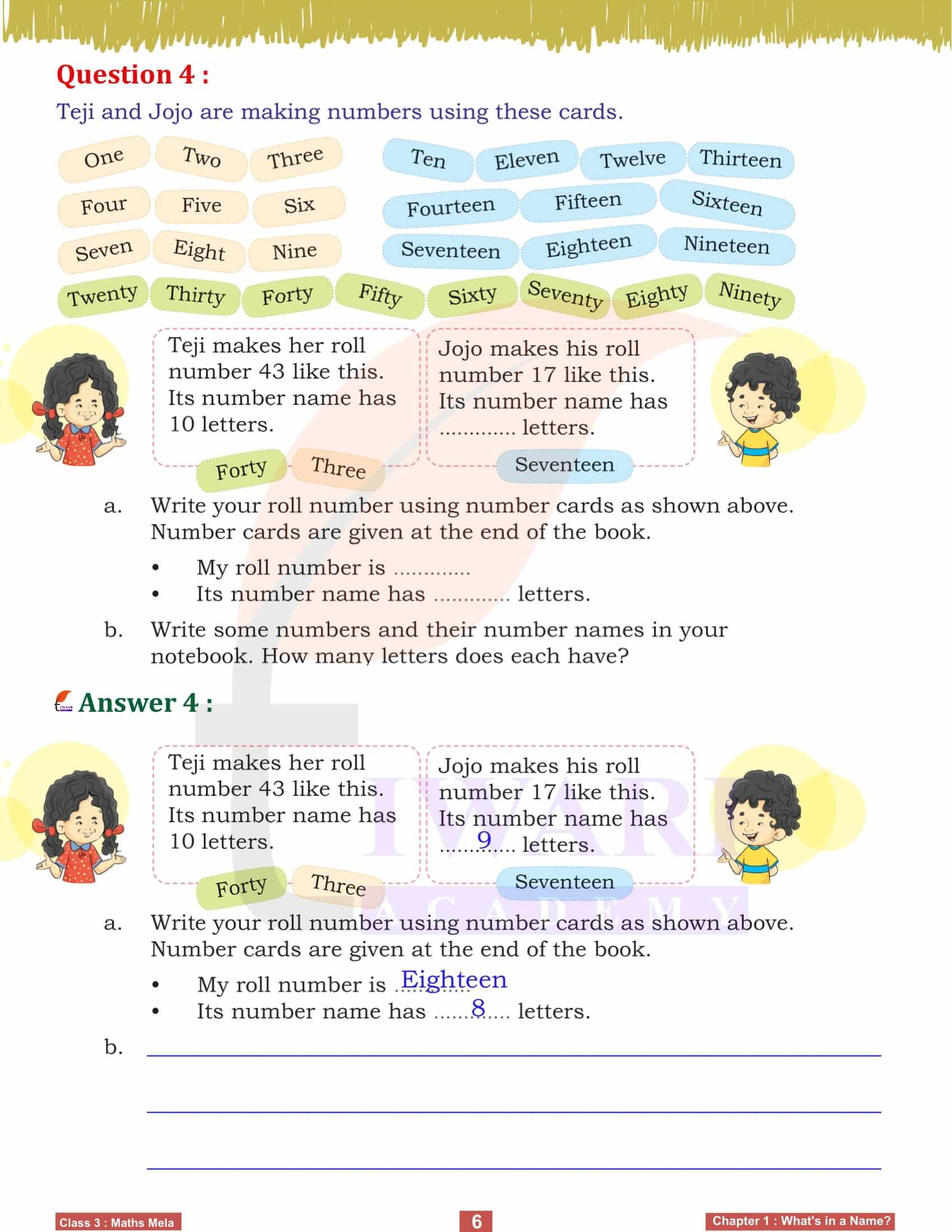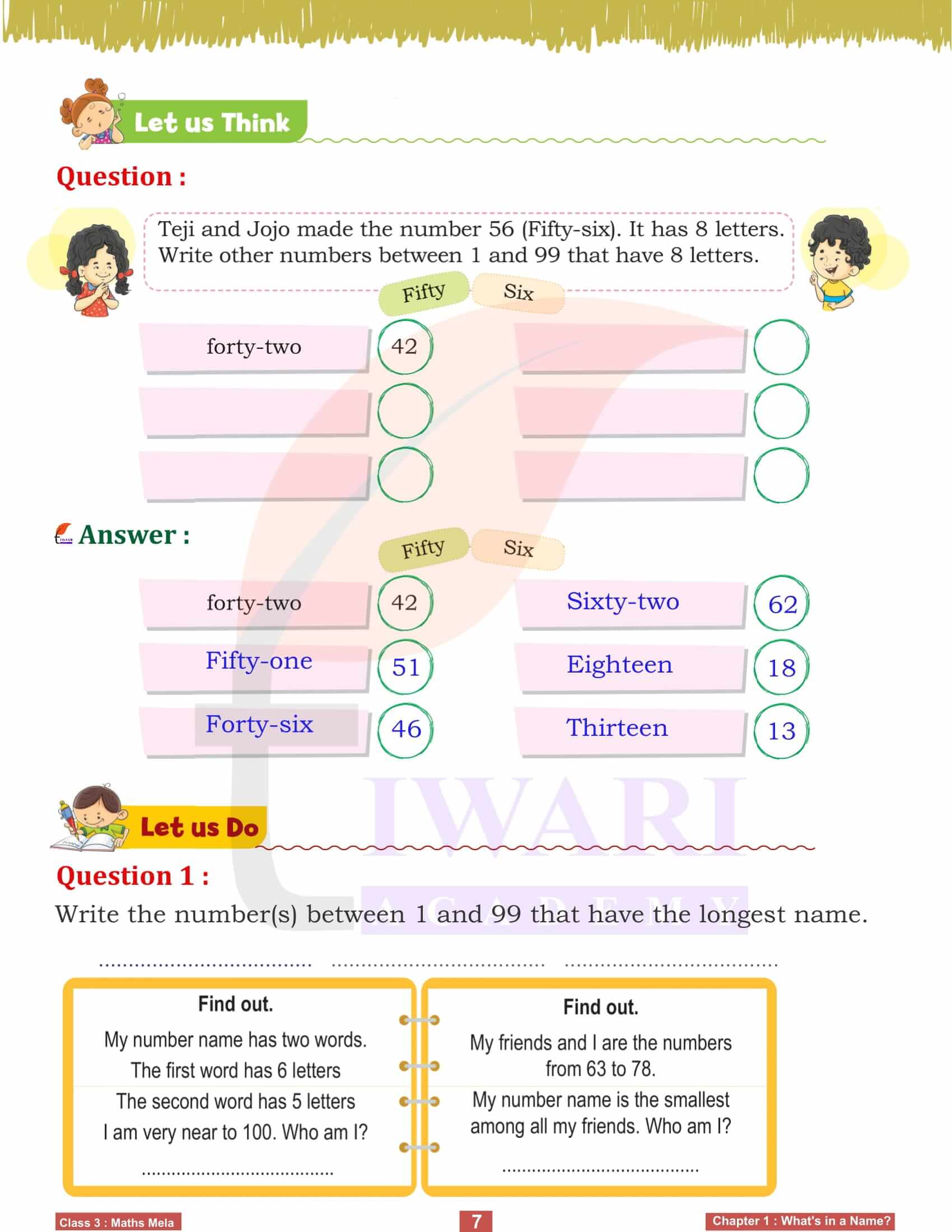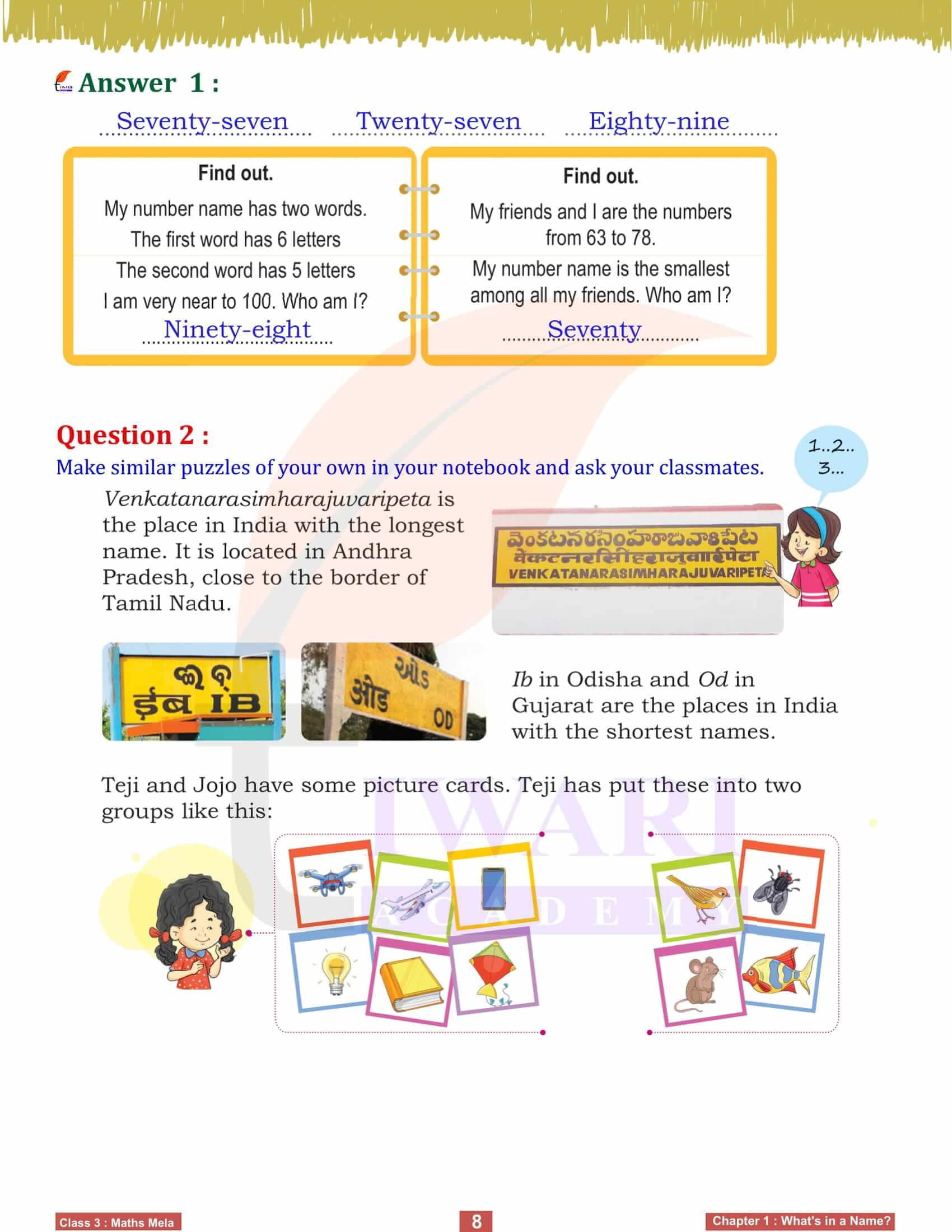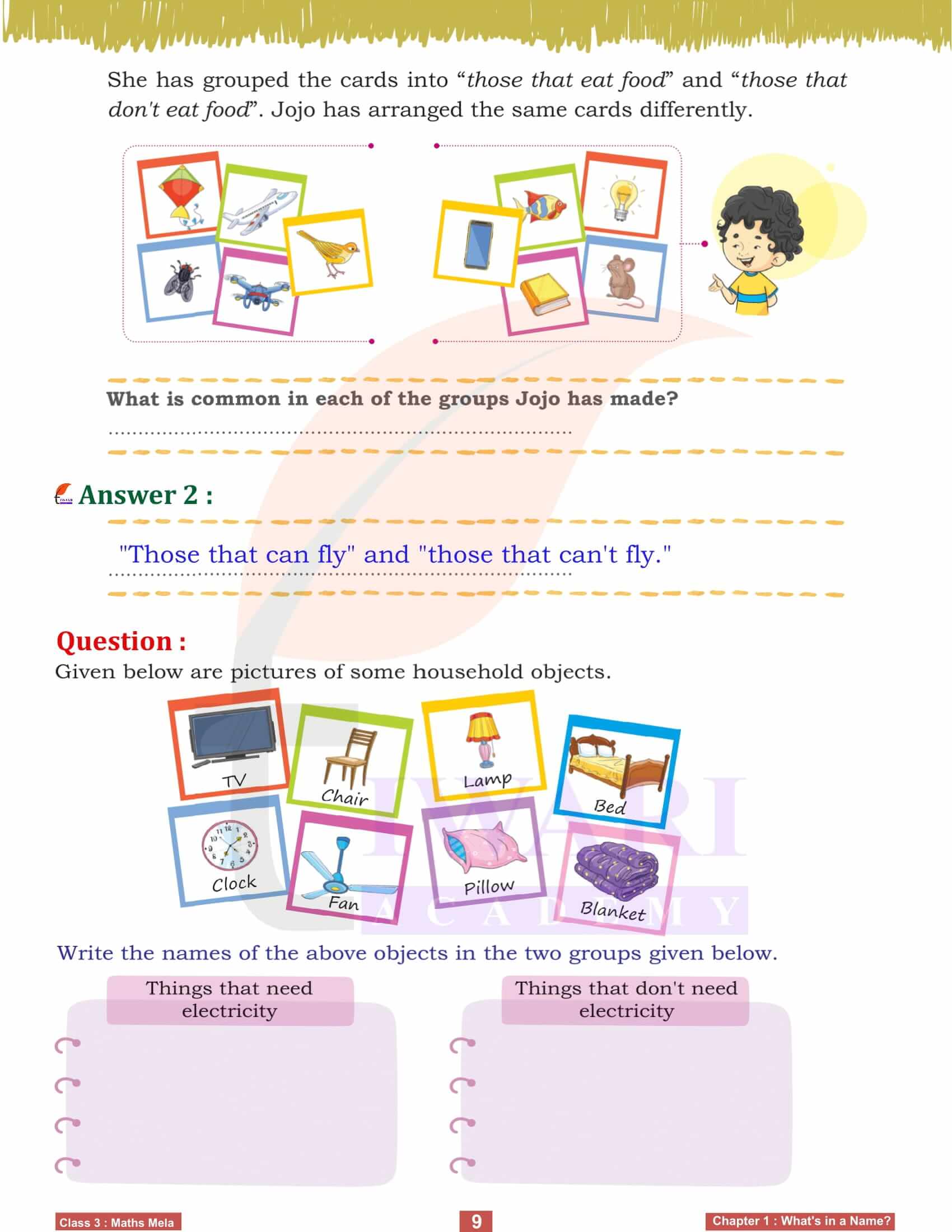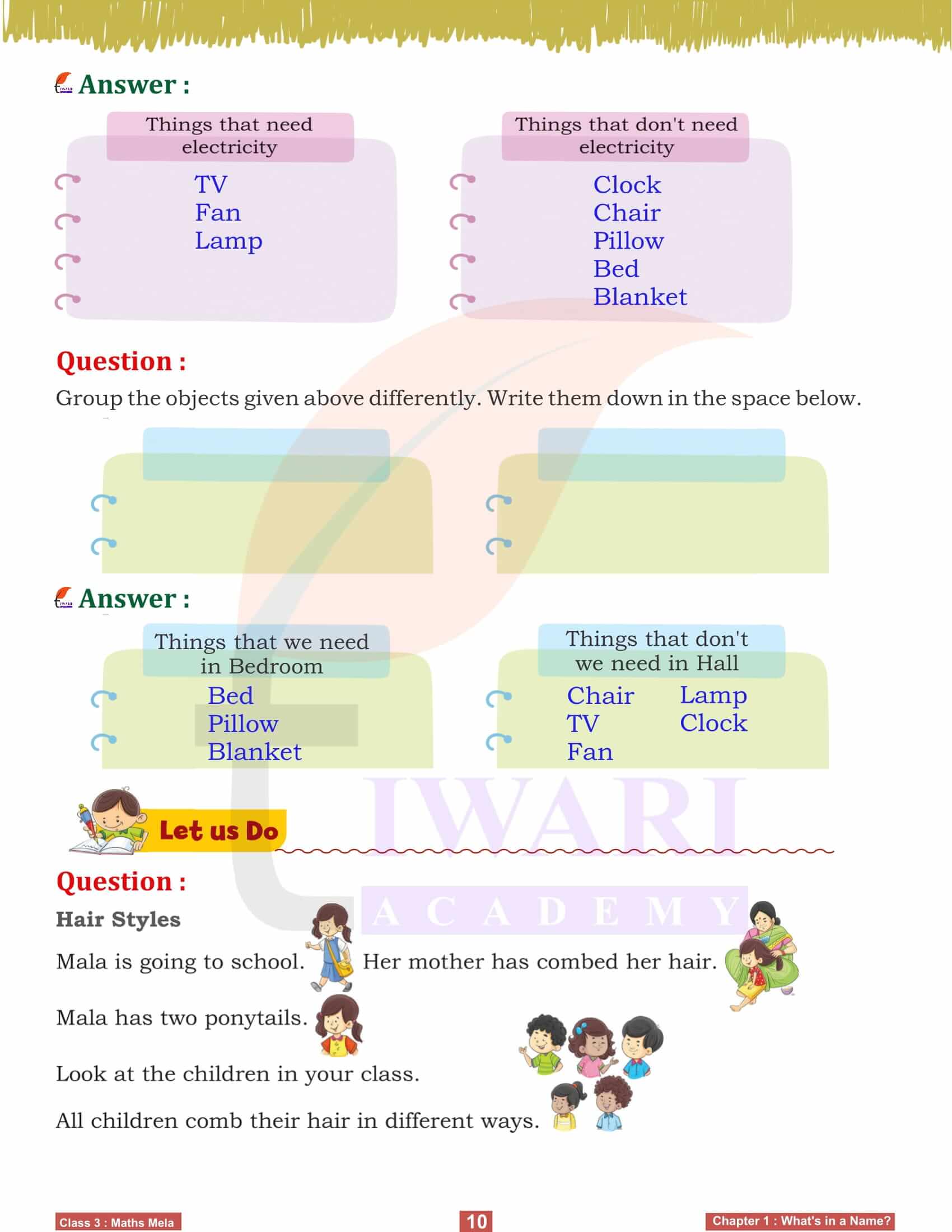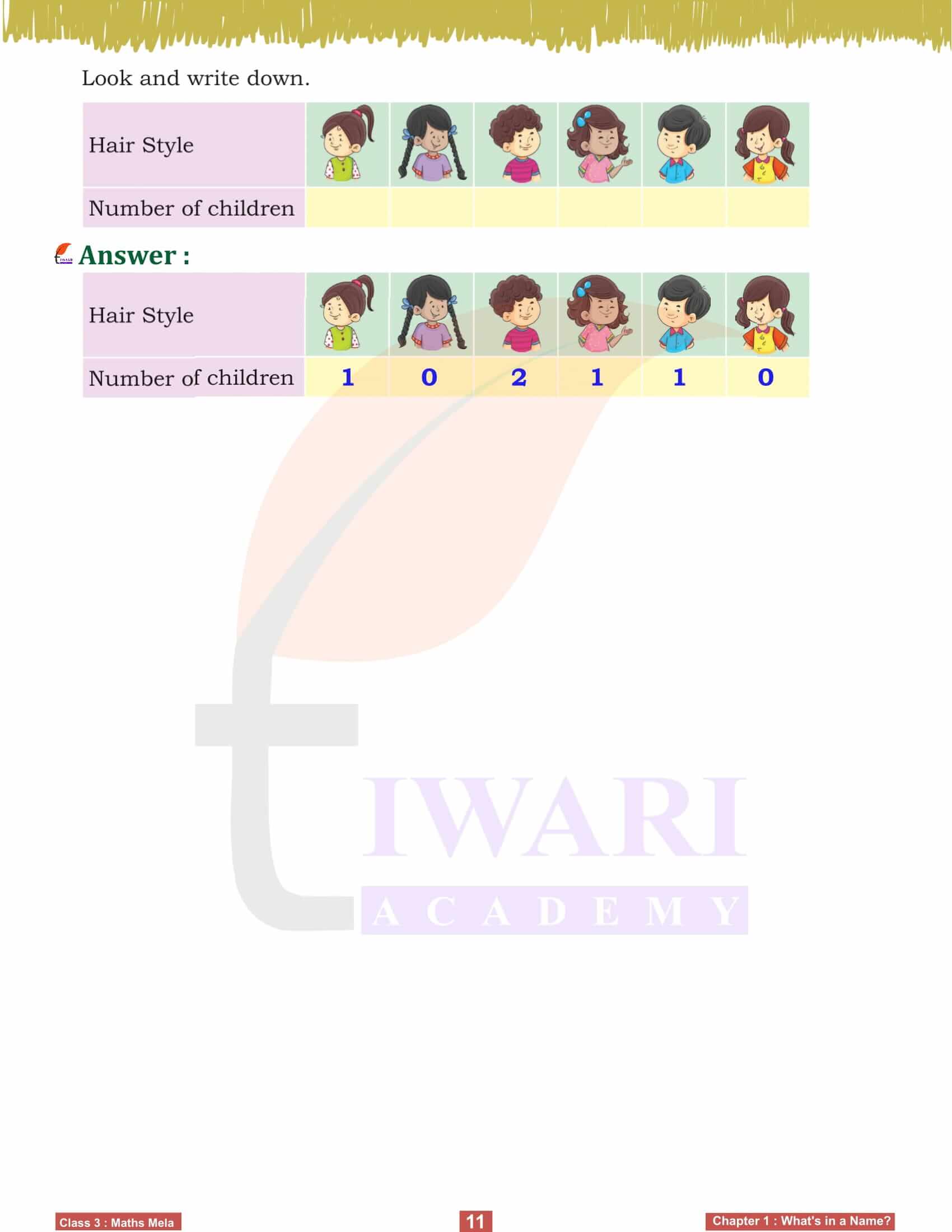NCERT Solutions for Class 3 Maths Mela Chapter 1 What’s in a Name? in English and Hindi Medium updated for academic session 2025-26. The question answers and description of all terms related to grade 3 Maths is given here in simple format. The syllabus is simplified according to National Education Policy 2020.
Class 3 Maths Study Plan
Class 3 Maths Mela Chapter 1 What’s in a Name?
Maths Mela Chapter 1 What’s in a Name?
Hello, dear students! Today, we will dive into the fascinating world of names and counting with our first chapter in your Maths textbook, “What’s in a Name?”. This chapter is not just about numbers; it’s about understanding the importance of names and how they can help us in organizing and keeping track of things. Let’s embark on this journey with Deba and Deep, two young cowherds, who face an interesting challenge. They need to keep track of their cows without knowing how to count. Sounds intriguing, right? Let’s see how they manage this!
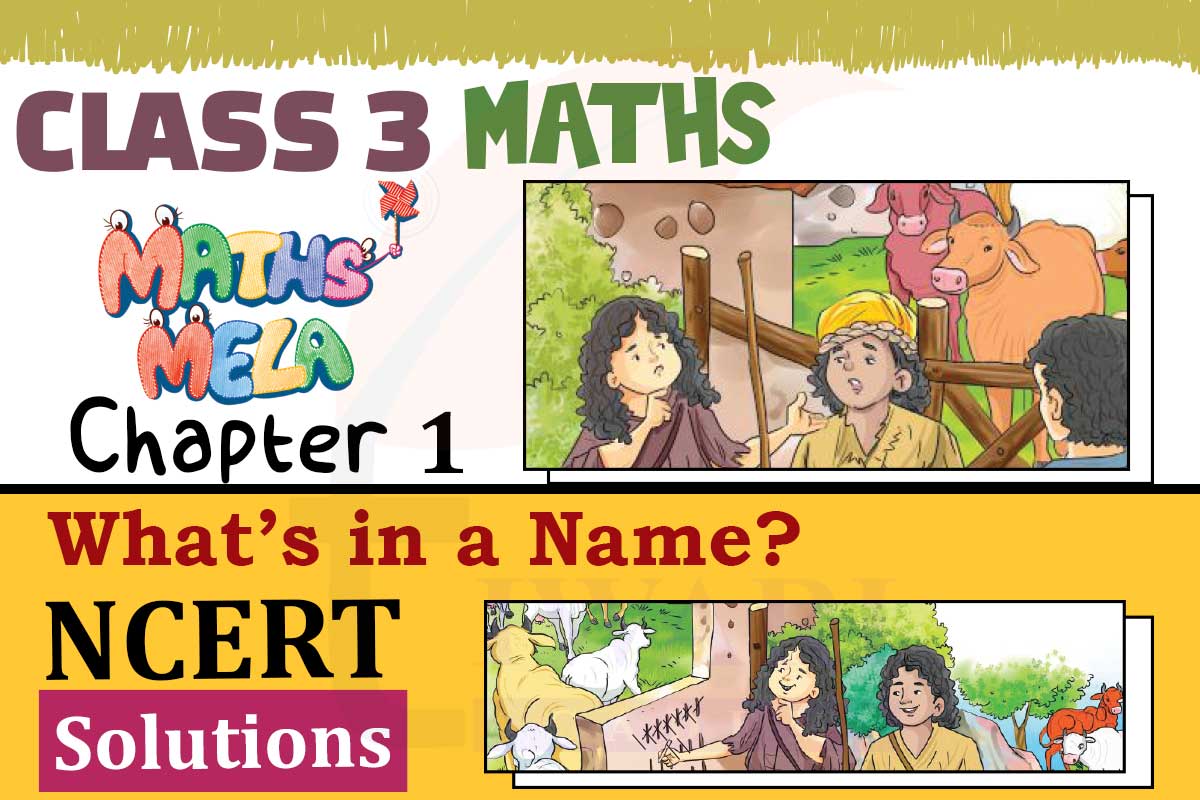
Deba and Deep’s Dilemma
Once upon a time in the village of Tarakeshwar, there lived two cowherds named Deba and Deep. Every day, they took their cows out for grazing. One evening, Deba asked, “How do we know if we have lost any cows?” They didn’t know how to count, which made it hard to keep track of their cattle. Their friend suggested a clever idea: make a mark on the wall for each cow that leaves the gate and strike out a mark each time a cow re-enters. This simple method worked perfectly at first, ensuring that all cows returned home safely. It shows us the power of simple counting strategies in solving everyday problems.
Learning Through Stories
As the years went by, Deba and Deep’s herd grew, making their task more challenging. One day, despite striking out the marks, they found two marks left on the wall but no cows outside. They panicked, fearing they had lost some cows. Fortunately, they found the missing cows in a nearby field. This incident highlights the importance of vigilance and accurate record-keeping. Through this story, we learn that counting and tracking are crucial, even when it seems simple. It also introduces us to the concept of using symbols and marks to represent quantities, a fundamental aspect of mathematics.
Exploring Names with Animals
In another part of the chapter, we meet a group of animals who decide to play a game. They want to form two teams, with captains chosen based on the length of their names. The animal with the longest name becomes the captain of one team, and the one with the shortest name leads the other. This activity not only makes us think about names and letters but also introduces us to basic comparison concepts. By identifying the longest and shortest names, we practice counting letters and understanding the significance of length in names.
Fun with Friends’ Names
The chapter 1 in Maths Mela, then encourages you to engage in a fun activity with your friends’ names. You’ll be asked to write down your friends’ names and identify the longest and shortest ones. This exercise helps you become more familiar with your classmates and understand how to compare and categorize names based on their lengths. It’s a playful way to practice counting letters and understanding patterns in names, which is a step towards more complex mathematical concepts like sorting and categorizing.
Number Games with Teji and Jojo
Teji and Jojo, two more characters in our chapter, use number cards to create various numbers and explore their number names. For example, the number 56 (fifty-six) has eight letters. You will be challenged to find other numbers between 1 and 99 that also have eight letters in their number names. This activity helps you practice spelling number names and understand the relationship between numbers and words. It’s a great way to integrate language skills with mathematical learning, making the process enjoyable and educational.
Grouping and Classifying Objects
We explore grouping and classifying objects in class 3 Maths chapter 1. Teji and Jojo group picture cards based on different criteria, such as those that eat food and those that don’t. You’ll also be asked to group household objects into categories like those that need electricity and those that don’t. This chapter teaches you how to observe, compare, and classify objects based on their characteristics. It’s a fundamental skill in mathematics and science, helping you develop logical thinking and problem-solving abilities.
By the end of this chapter, you will have learned a lot about names, numbers, and the importance of organizing information. Let’s enjoy these activities and stories, and learn how fun and interesting mathematics can be!
Related Links
